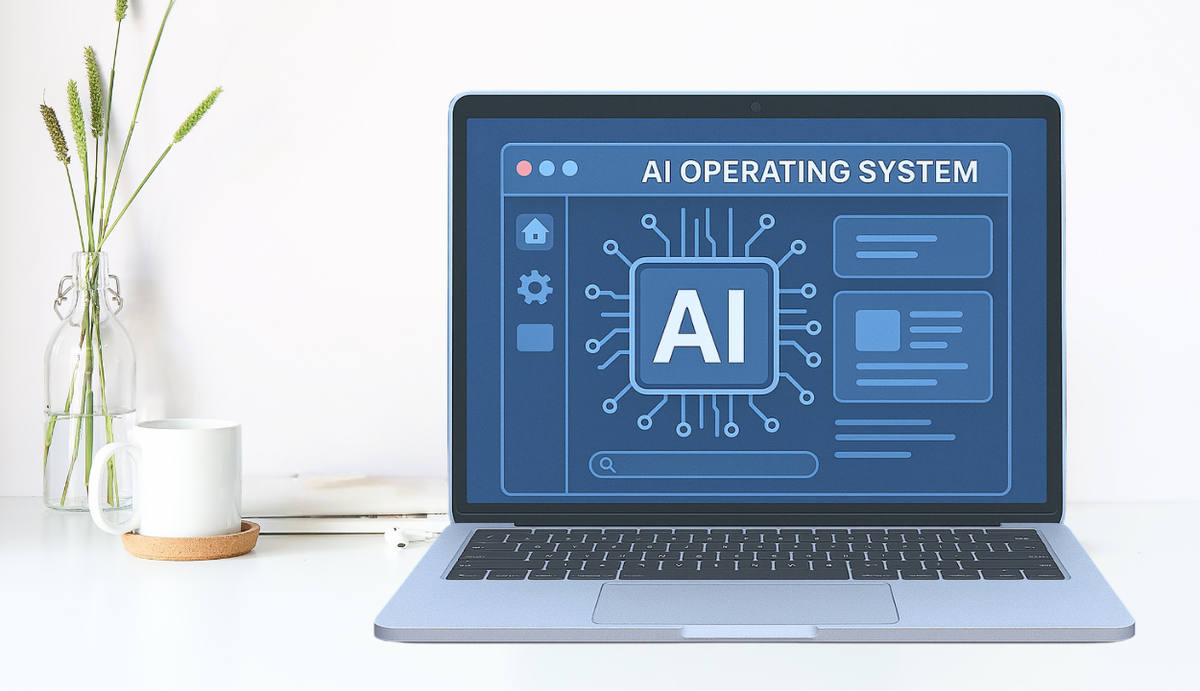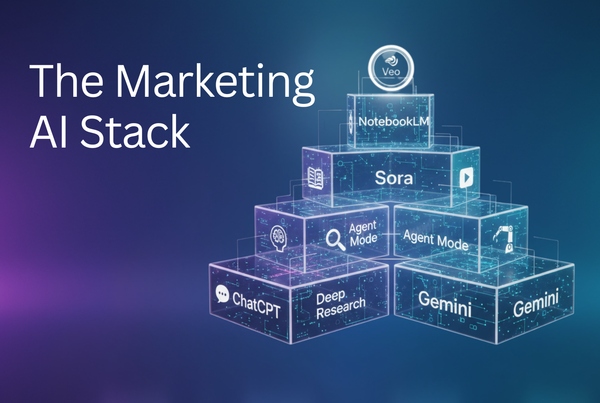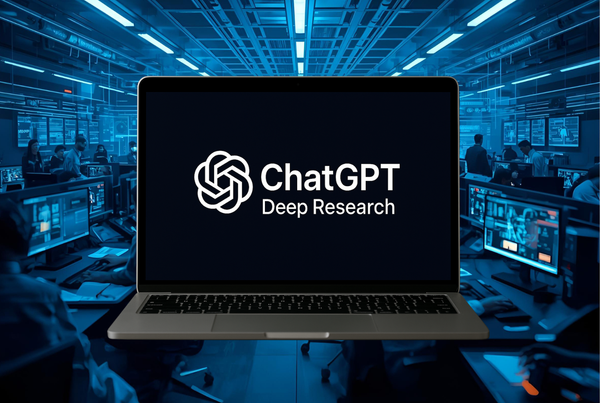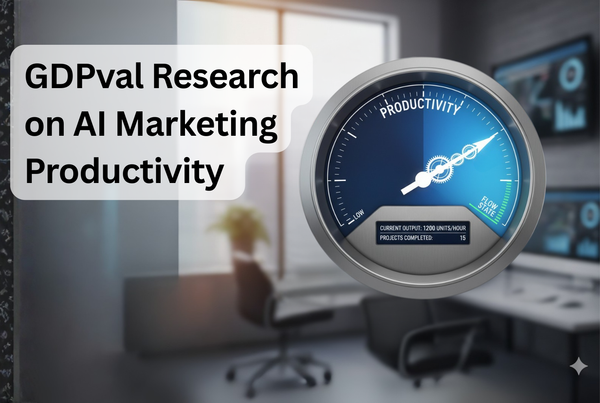How AI Becomes the Marketing Operating System of the Future
What does that actually mean for you as a marketer without a large team or enterprise tech budget? It requires rethinking how your department works. And how your role evolves.

Sam Altman has observed that younger generations increasingly use ChatGPT not as a one-off app, but as a life assistant, “like an operating system.” They rely on it for learning, planning, brainstorming, and even personal coaching. That same shift, AI moving from tool to infrastructure, is now making its way into business. Specifically, into marketing.
For small and medium-sized businesses (SMBs), AI marketing operating system is a foundational layer that coordinates, learns, and improves every campaign, asset, and interaction.
So what does that actually mean for you as a marketer without a large team or enterprise tech budget? It requires rethinking how your department works. And how your role evolves.
Here are four strategic shifts that define the future of AI marketing OS.
1. From Tools to Systems: Moving Beyond the AI "Add-On"
Most marketers start by using AI like a utility knife, handy, but limited. A chatbot here, a subject line generator there, maybe an AI scheduling assistant.
But the real breakthrough comes when you stop treating AI as a series of disconnected tools and start integrating it as your marketing OS. That’s when workflows become interconnected and intelligent.
Customer behavior on your website dynamically triggers personalized follow-ups. Ad performance reshapes your content calendar. A chatbot interaction influences your lead scoring model. AI isn't just automating tasks, it’s orchestrating an entire system that learns and adapts across channels.
It’s not just about efficiency. It’s about marketing that evolves in real time.
2. From Best Practices to Real-Time Optimization
“Best practices” have been marketing’s north star for decades, timing, keywords, demographics, funnel structure. But best practices are backward-looking. They're generalizations based on what used to work.
With AI as your OS, the focus shifts from static playbooks to continuous, personalized optimization. Every campaign element, headline, timing, offer, creative, is A/B tested and fine-tuned automatically. The AI learns what works for your specific audience right now and adjusts accordingly.
You're not just following the rules. You're rewriting them in real time, based on your data, your market, and your brand.
3. From Data Overload to Data-Driven Precision
Marketers are drowning in data, but not necessarily making better decisions. Traditional dashboards help you report on the past. AI helps you predict what’s next.
An AI OS doesn’t just show you KPIs. It surfaces insights: what's working, what’s underperforming, what to test next. It helps prioritize based on impact, flag risks before they materialize, and uncover hidden patterns in behavior and segmentation.
This lets you move faster and bolder. No more paralysis by analysis. No more “gut feel” decisions based on incomplete data. Instead, a confident, data-driven approach to creative and strategic bets.
4. From Task Management to Insight Leadership
As AI handles more tactical execution, the human marketer’s role evolves, not into irrelevance, but into greater strategic importance.
In an AI-powered system, you and your team become:
- Insight Curators – Making sense of the data AI uncovers, turning it into actionable stories.
- Orchestrators – Coordinating how different AI-driven components work together across the funnel.
- Brand Stewards – Ensuring everything remains on-message, aligned with your values and positioning.
- Relationship Builders – Investing time in deeper connections with customers, partners, and team members, what AI can’t replicate.
The marketer is no longer the operator. You're the conductor.
Why SMBs Are Poised to Win in the AI OS Era
There’s a common assumption that leveraging AI at a strategic, integrated level, the kind that looks like an operating system, requires enterprise-level resources. Dedicated AI teams. Custom models. Expensive tech stacks. Rows of developers.
It doesn’t. In fact, for many small and mid-sized businesses, AI is more accessible than ever.
That’s because the barriers to entry have dropped dramatically. What once required a full IT department or a significant software investment can now be achieved with intuitive, no-code tools and off-the-shelf integrations. You don’t need to build AI from scratch. You need to know how to apply it. And SMBs are often better equipped to do exactly that.
Here’s why:
1. Agility Is Your Superpower. Unlike large enterprises, SMBs don’t have to wrestle with bureaucracy. That means you can test AI in real time: spinning up pilots, learning quickly, and scaling what works. This speed of iteration is a critical advantage. AI thrives on feedback loops. The faster you deploy and learn, the faster your AI system becomes smarter and more effective.
2. Modern Tools Are Designed for You. The AI ecosystem isn’t just growing, it’s evolving toward accessibility. Tools like ChatGPT, Claude, Jasper, Copy.ai, and hundreds more offer intuitive user interfaces, step-by-step prompts, and plug-and-play integrations with tools SMBs already use (like HubSpot, Zapier, or Google Sheets).
You don’t need a data scientist to use them. In many cases, a savvy marketer with curiosity and a few hours of experimentation can build powerful automations, predictive workflows, or custom GPTs. You can go surprisingly far with off-the-shelf software, especially when you approach AI not as a “tech project” but as a business solution.
3. Smaller Teams = Stronger Alignment. In a large company, aligning marketing with sales, product, and customer success around AI-driven workflows can take months. But in an SMB, cross-functional alignment is often baked into the culture. Your team sits within earshot of each other. You know your customers, your brand voice, and your goals deeply.
That closeness means it’s easier to train AI systems with the right data, the right tone, and the right context. You can personalize your automations without a dozen meetings about brand guidelines. You can adjust a chatbot’s behavior after a single call with sales. This alignment fuels smarter, more effective AI.
4. You Don’t Have to Be First, You Just Have to Be Smart. Enterprises may be first to adopt cutting-edge tech, but they often face internal friction that slows progress. SMBs, on the other hand, can take the lessons from early adopters and leapfrog straight into best-practice territory.
This is your chance to be a fast follower with strategic focus. Let the big companies test the waters and publish their results. Then use those learnings to build leaner, faster, more nimble systems that are right-sized for your business.
5. ROI Hits Faster at Small Scale. AI for SMBs isn’t just about innovation, it’s about leverage. A single AI tool can help a one-person marketing team do the work of three, or help a founder deliver personalized campaigns without hiring an agency. That kind of impact is felt immediately.
When AI becomes your OS, you don’t just reduce friction. You unlock capacity, without adding overhead.





